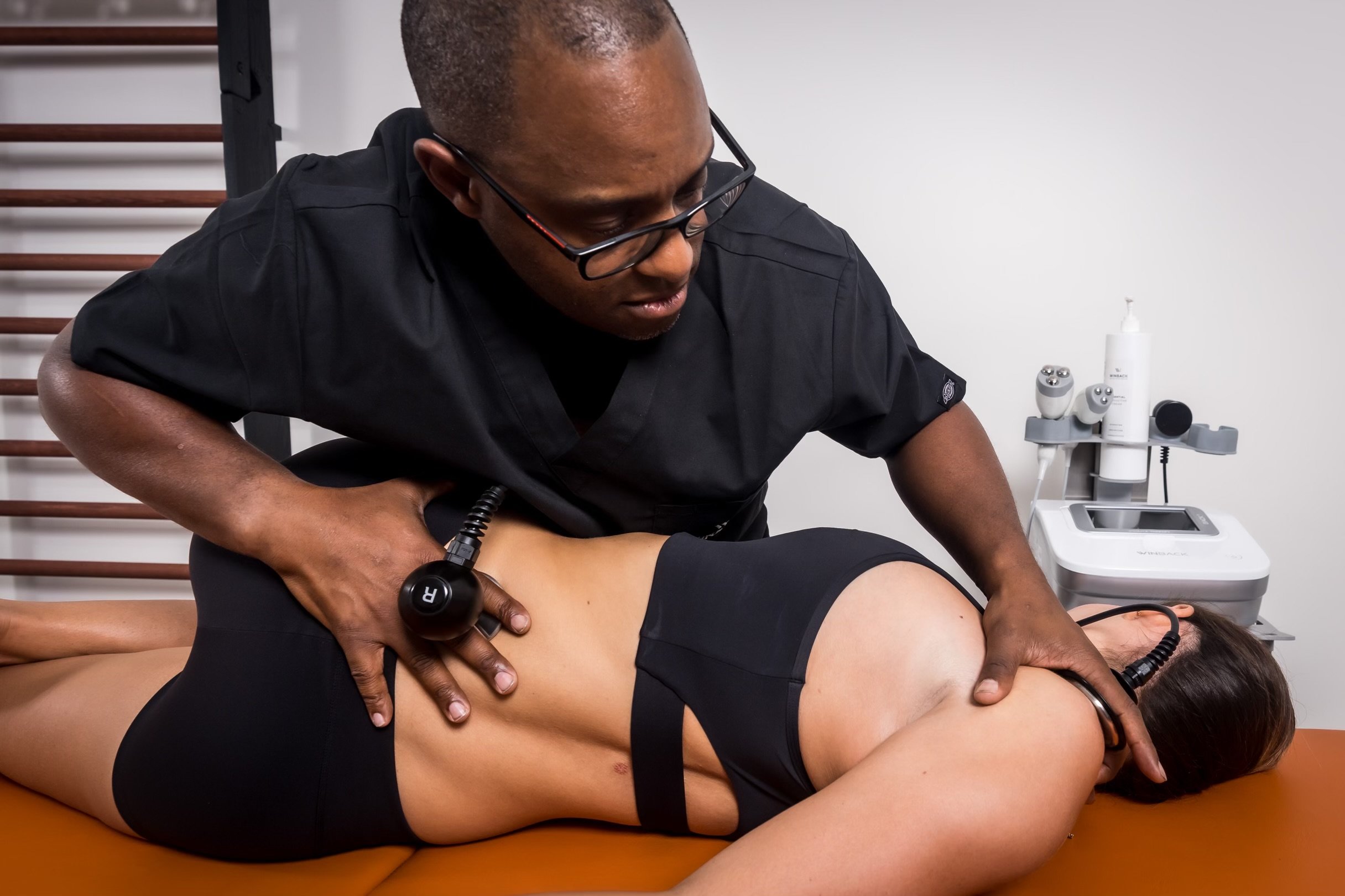New Technology Revolutionizing Bodywork & Rolfing Part 1: What is Tecar Therapy?
Staying abreast of new technologies is crucial for effectively supporting Rolfing, Massage & Fascia Therapies, as it enhances client results.
What is Tecar Therapy?
Diathermy, also known as Tecar Therapy (an acronym for Capacitive and Resistive Energy Transfer), is a therapeutic technique utilizing an electric current with frequencies in the Medium Frequencies (MF) radio band. It penetrates deep into the human body's tissues, triggering a biostimulating effect. Typically administered by physiotherapists in medical practices, it addresses various pathologies, including rehabilitation, sports injuries, and aesthetic treatments.
The origins of diathermy trace back to 1939 when William Beaumont developed the first instrument capable of generating endogenous heat, coining the term "diathermy." Tecar Therapy, in its broadest sense, was patented in 1995, marking a milestone in its study and application. It's essential to note that while "diathermy" denotes the therapeutic technique, "TECAR" is a commercial acronym derived from its main functions.
How Tecar Therapy Works
Diathermy operates on the principle of the capacitor, consisting of two conductive armatures separated by an insulator, creating a potential difference between them. This generates electrical charges that attract and repel each other, concentrating near the armatures. In the context of diathermy, the handpiece (capacitive or resistive) and return plate represent the armatures, with high-strength connective tissue serving as insulation. The current generator operates in the long-wave radio frequency range, developing endogenous energy within biological tissues through the movement of ions and electrolytes.
Is Tecar Therapy Effective?
With almost 30 years of history and numerous clinical studies supporting it, diathermy has proven to be highly effective. Its electromagnetic energy/tissue interaction produces a controlled temperature increase within tissues, leading to an ionic flux with micro-hyperemia. This facilitates the release of endogenous substances, such as cortisol and endorphins, reducing pain, edema, and inflammation. Diathermy stimulates increased blood flow, enhancing normal immune defenses and promoting tissue regeneration, thereby shortening motor recovery times.
Treatment Modes: Differences Between Capacitive and Resistive
Diathermy offers two treatment techniques:
Resistive Technique: Concentrates charges and biological effects in tissues with the highest resistance, like bone, cartilage, tendons, and deep muscles. This is especially beneficial for treating chronic pain and soft tissue imbalances.
Capacitive Technique: Increases charge density near the mobile electrode, especially in superficial soft tissues, utilizing an electrode treated with an insulating coating. This can be advantageous in addressing myofascial pain and restoring proper body structure.
Athermic and Thermal Treatment: Differences
While diathermy historically referred to its thermal effect, it is now acknowledged that therapy can occur without triggering the thermogenic effect, known as athermia. Thermal treatment is effective for reducing pain perception and promoting peripheral vascularization, suitable for chronic diseases. Athermic treatment, on the other hand, avoids high vascularization while maintaining tissue biostimulation, making it suitable for treating acute inflammation and trauma.
Treatment of Acute and Chronic Pathologies
Tecar Therapy stands out positively by acting in-depth and guaranteeing therapeutic effects for both acute and chronic conditions. Athermic treatment is ideal for acute states, allowing early intervention after injuries like sprains. Thermal treatment is essential for chronic problems, reducing pain, and promoting vascularization. Patient compliance, with feedback on perceived heat levels, plays a key role in effective therapy delivery.
How a Tecar Therapy Session Takes Place
Diathermy sessions, carried out in medical practices, involve the patient lying on a treatment table. Special electrodes enable therapy during movement, with the patient following specific dynamic actions under the therapist's guidance. The practitioner applies the handpiece and return plate on the treatment area, using conductive cream for optimal results. This hands-on approach can complement Rolfing SI and bodywork techniques for enhanced results.
How Long Does a Tecar Therapy Session Last?
A diathermy session typically lasts 20-25 minutes, depending on the body part and type of treatment. Session duration varies based on whether the therapy is performed on small areas or in athermia.
Tecar Therapy: After How Long Does It Work?
A diathermy cycle comprises 10 sessions, conducted two to three times a week. Initial results are noticeable after the first treatment, but stable, long-lasting improvements require at least four to five sessions.
Physical Therapy and Tecar
Diathermy proves highly effective in physiotherapy centers, enhancing the benefits of treatment when combined with other therapies. Whether performed before or after manual treatments like massage therapy or chiropractic, diathermy exerts a preparatory effect by increasing local temperature, vascularization, and reducing muscle tone and viscosity. It is particularly beneficial in joint problems, promoting mobility and aiding in muscle recovery.
For Which Pathologies Do We Recommend Tecar Therapy?
Diathermy is recommended for various pathologies, including tendinitis, tendinosis, joint pain, muscle contracture, muscle strain, bruising, epicondylitis, Golfer's elbow, neck pain, low back pain, lumbosciatica, slipped disc, whiplash, gonarthrosis, chondropathy, distortion, and ACL, LCL, MCL injuries.
Tecar Therapy: The Benefits
The benefits of diathermy can be summarized in five main points:
Fast-onset analgesic effect, related to biostimulation and the endogenous thermal component.
Rapid and medium onset anti-inflammatory effect, promoting endogenous healing processes.
Biostimulating effect, enhancing energy supply and micro-vascularization for healing and nutrient supply.
Myorelaxant effect, achieved in hyperthermic treatments, reducing muscle viscosity and promoting deep vascularization.
Restoration of vascularization, mainly related to the endogenous hyperthermic effect, optimizing metabolic processes.
Tecar Therapy Contraindications
As with any physical therapy, diathermy has contraindications. Treatment is not recommended for individuals with bleeding, cancer, phlebitis, thrombi, arteriopathy, decreased sensitivity, metal prostheses, pacemakers, hearing aids, insulin pumps, intrauterine devices, fever, infections, pregnancy, epilepsy, or children under the age of 14. It is crucial to consider these factors before administering the therapy.


